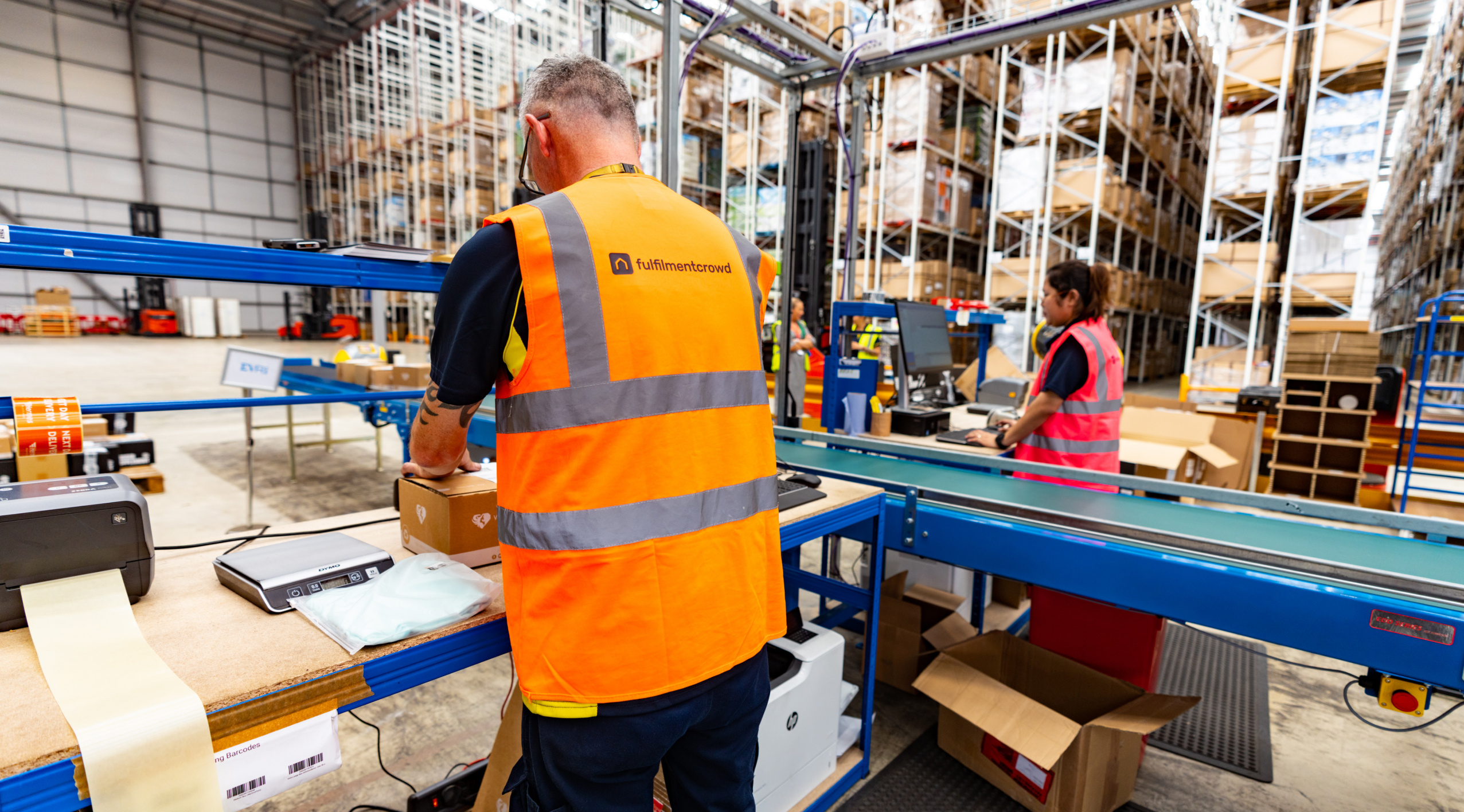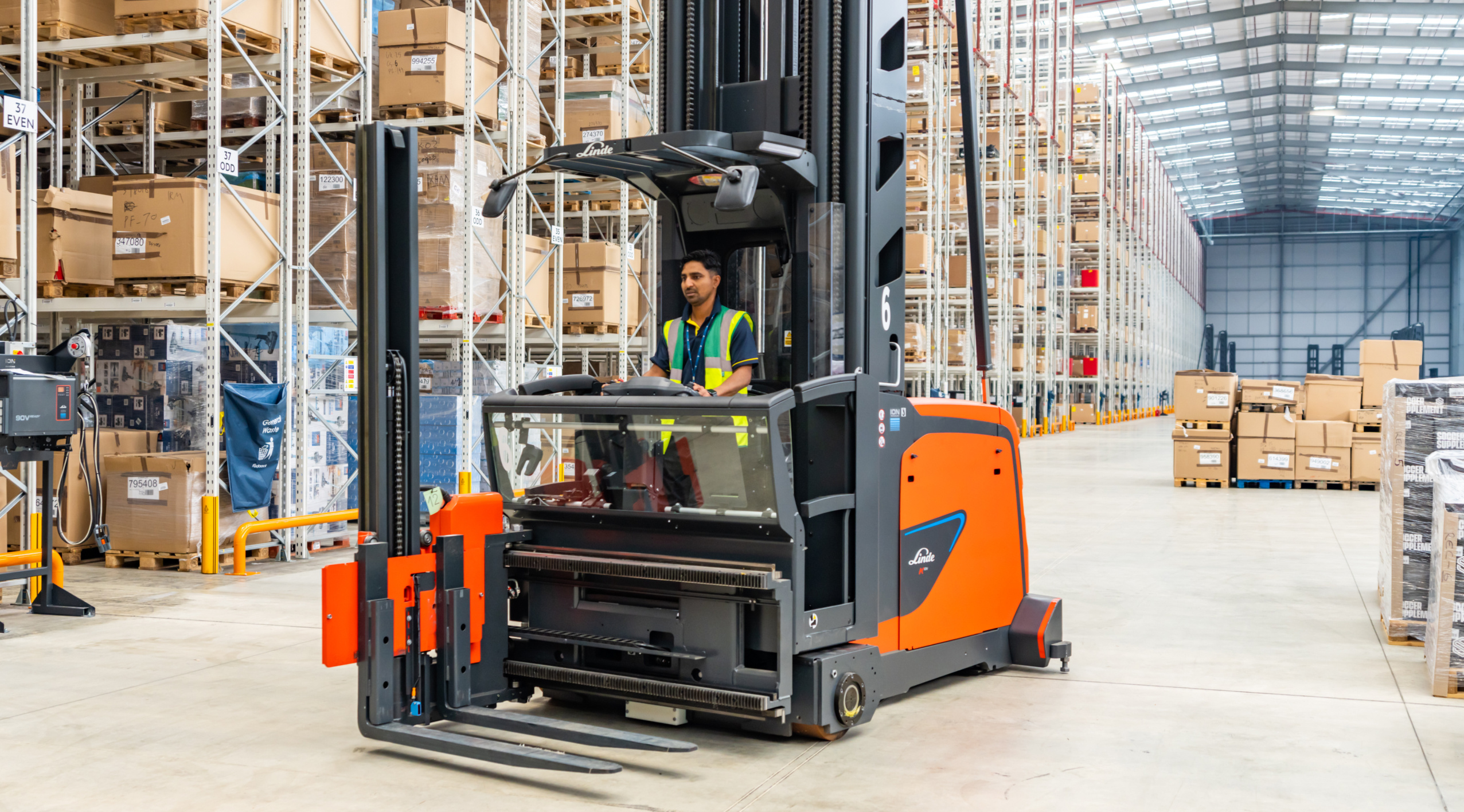Discover fulfilmentcrowd’s new fulfilment network provider in Dublin, designed to streamline your eCommerce logistics. Faster delivery, prime location, and sustainable solutions for your business.
Mastering the dual challenge of B2B and DTC with a single 3PL partner
.jpg?width=300&name=What%E2%80%99s-Next-for-Demand-Forecasting-blog-advert%20(1).jpg)
Download your copy of the Demand Forecasting eBook
Reviewing predictive analytics, AI, and sustainability in inventory management.
Download the eBookGet ready for some acronyms because this article has SLOT (shed-loads-of-them). As your business matures and expands, you may have found yourself with a conundrum on your hands; the dual challenge of managing both business-to-business (B2B) and direct-to-consumer (DTC) fulfilment operations.
Each comes with its own unique demands, intricacies, and, let’s face it, a truck-tonne more paperwork. Managing both seamlessly, without so much as a hiccup, requires a delicate balance of logistics, inventory management, and customer satisfaction. But can this be achieved with a single third-party logistics (3PL) provider alone? If this article doesn’t convince you, we’re not sure what will.
Understanding the complexities (UTC)
We don’t want to teach you how to suck eggs, but let’s clear up the key differences between B2B and DTC before we learn how to master them both.
B2B and DTC fulfilment operations operate on different wavelengths. B2B transactions typically involve larger order volumes, standardised packaging, and scheduled deliveries to distribution centres or retail partners. DTC caters to individual consumers, necessitating smaller, personalised shipments, often with varying delivery preferences and expectations.
But with a vastly different B2B market than ever before, B2B buyers are also expecting that same level of personalisation and cushy experience we see in the DTC world. This adds an extra layer of complexity, especially when B2B shipments tend to have more requirements, more paperwork, and more pain points. Addressing these complexities strategically can provide significant results:
- Order volume and frequency: B2B orders are usually placed in bulk and at regular intervals, whereas DTC orders can vary widely in volume and frequency, often with unpredictable spikes during promotions or seasonal peaks.
- Packaging and presentation: B2B shipments are designed for efficiency and cost-effectiveness, with standardised packaging optimised for palletised shipping. DTC orders require attention to detail, often involving branded packaging, personalised messages, and eco-friendly materials to enhance the customer experience.
- Delivery expectations: B2B customers prioritise reliability and consistency in delivery schedules, while DTC consumers expect flexibility, speed, and real-time tracking updates.
But, as we mentioned earlier, the line between B2B and DTC is blurring - with many businesses pushing for the same levels of speed and convenience that consumers experience. How can this be achieved?
Strategic considerations
The vast difference between B2B and DTC logistics might have you looking for the back door, but the growing similarities should have you recognising the countless opportunities that lie ahead. It’s just a matter of thinking strategically…
By consolidating B2B and DTC logistics functions under a single 3PL partner, you can streamline operations, reduce redundancies, and optimise costs across the whole supply chain. This approach not only maximises efficiency, but also minimises overheads. We could toot our own horn here and talk about how our very own networks and technology allow you to do just that, but we won’t go there (for now…).
A competent 3PL partner (name drop: fulfilmentcrowd) offers the agility and scalability necessary to adapt to fluctuating demand patterns, seasonal peaks, and market trends and changes. We know you crave the flexibility to scale operations up or down seamlessly - without compromising service levels. With our model of utilising redundant warehouse space, rather than constructing new buildings, we’re technically the only fulfilment provider who can offer unlimited capacity, meeting demand head-on.
And it’s not just about space. Although our hybrid delivery model allows you to grow at speed, into either B2B or DTC markets, our advanced analytics and reporting capabilities empower you with actionable insights into inventory management, order fulfilment trends, and customer behaviour. Data that you can drill down into and make real, tangible changes from.


Benefits of a single 3PL partner
Now we’ve touched on the strategic considerations of a single 3PL provider, let’s delve into the benefits - or as we like to call them, the unavoidable truths. Grab yourself a brew, because there are several.
- Unified logistics strategy: Simply put, a unified approach to B2B and DTC logistics streamlines management and oversight, enabling you to focus on core business activities, instead of logistical nightmares.
- Risky business: Mitigate the risks associated with managing multiple 3PL partners, ensuring consistency, reliability, and accountability across the supply chain. The expression ‘too many cooks’ comes to mind.
- Cost efficiencies: We could be crass here (so we will), but a single 3PL provider is better bang for your buck. With one partner, one network, and one platform, you’ve optimised your processes and consolidated resources.
- Moving on up: If you’re anything like us, having the ability to scale and expand at free will is essential. A single 3PL partner provides the scalability needed to grow and expand operations without the burden of infrastructure investments or operational constraints. From peak seasons or new markets (or B2B to DTC and vice versa), you need a partner that can adjust capacity, resources, and capabilities - without leaving you in the lurch.
- Expertise: A single 3PL provider should know their stuff. We’re not just talking about logistics. This expertise extends beyond that to include regulatory compliance, technology integration, and industry-specific solutions, allowing you to stay ahead of the curve - rather than simply keeping up.
- Keeping things simple: Streamline communication, reduce boring administrative overheads, and, frankly, eliminate the banality of managing multiple service providers. Things become simplified, unified, and awesome-ified (okay, ignore the last one).
- Enhanced customer satisfaction: Whether your customers are currently B2B or DTC, they both want the same outcome - accurate orders that are delivered on time (and in one piece). And although multiple 3PL providers would be able to provide you with that, a single 3PL partner has full oversight of your brand and business objectives, helping you to deliver exceptional service and customer experiences that will only continue to drive your business forward. Yes, we might be biased, but we’re also telling the truth.
How to manage the challenges to reap the benefits
Before you can even think about a single 3PL partner, you need to consider how that provider addresses the challenges you know you’re about to face. Do they have…
Integrated inventory management? An integrated inventory management system that consolidates inventory data for both B2B and DTC channels is essential. This system should provide real-time visibility into stock levels, track inventory movement across multiple locations, and support demand forecasting. And this is just the bare minimum.
Flexible order fulfilment processes? This may involve implementing order batching and picking strategies for B2B shipments, whilst also supporting individual order processing and custom packaging for DTC orders. Flexibility and agility is key - you have to be pretty rigid on that.
Dynamic packaging solutions? B2B and DTC orders require different packaging options - we all know this. So using customisable packaging options that allow for efficient packing of bulk orders for B2B customers, whilst also enabling personalised packaging for DTC consumers, has to be a non-negotiable.
Integrated and innovative technology solutions? Order Management Systems (OMS), Warehouse Management Systems (WMS), and Transportation Management Systems (TMS - we did warn you it would be acronym-heavy!) are all essential for seamless logistics operations. These systems should be capable of handling the complexities of both B2B and DTC orders, providing end-to-end visibility, automated workflows, and data analytics capabilities. Without them, you’ve pretty much fluffed it.
Compliance management? From the right certifications and licences to implementing robust quality control processes, compliance management, especially when it comes to managing both B2B and DTC, should be the starting point for your search for a 3PL provider. If they can’t keep you penalty-free, they don’t deserve to have you.

What’s next?
The benefits of partnering with a single 3PL provider are undeniable (go on, try to deny it, we dare you!). From efficiency gains and cost savings to expertise, scalability, and customer experience enhancements, not only do you stand to gain a competitive edge, but you also stand to gain a strategic business partner.
Confident that partner is us? Speak to an expert today and we’ll master the dual challenge of B2B and DTC with you.
Looking for more industry insights?
Check out our other recommendations just for you!
See allWhat does the future hold for supply chain and logistics in 2022? See our latest blog for Shopify's insights into you can future-proof your online brand.
Expand into Europe with ease. VATAi x fulfilmentcrowd simplify VAT compliance and logistics, helping global eCommerce sellers scale with confidence.





.jpg?width=300&name=Magna-park%20(1).jpg)
 By Alice Davies
By Alice Davies




